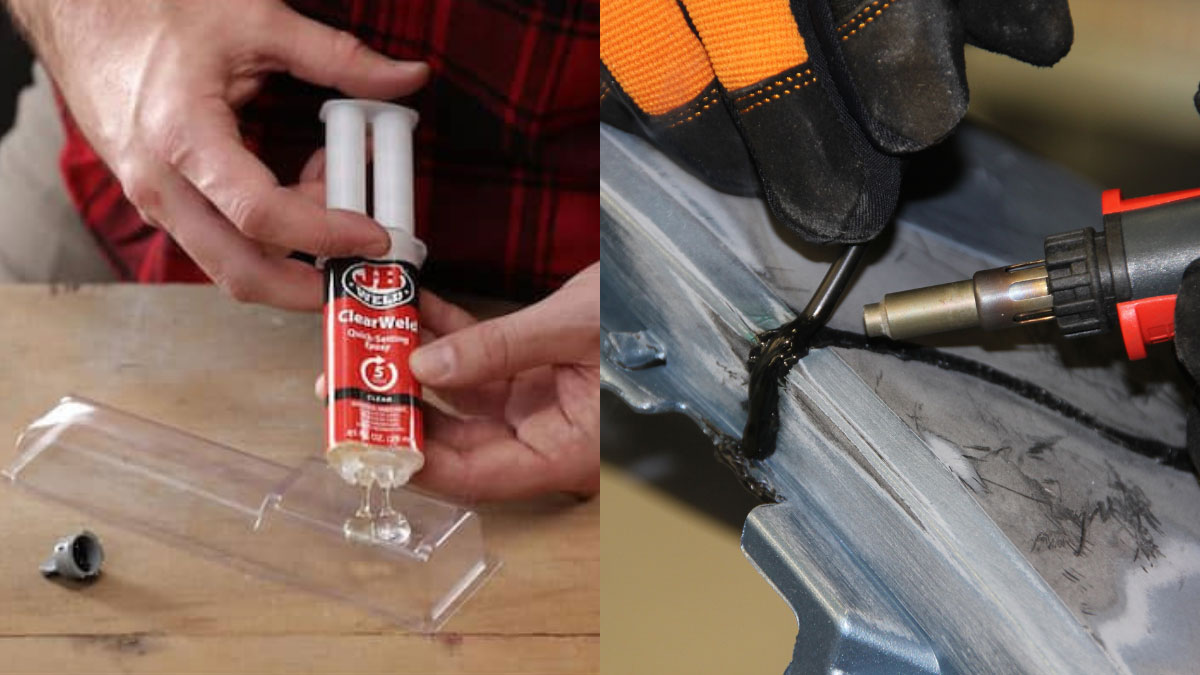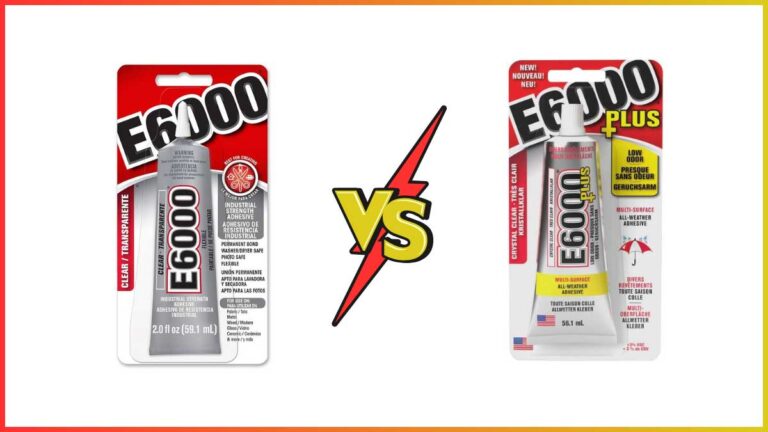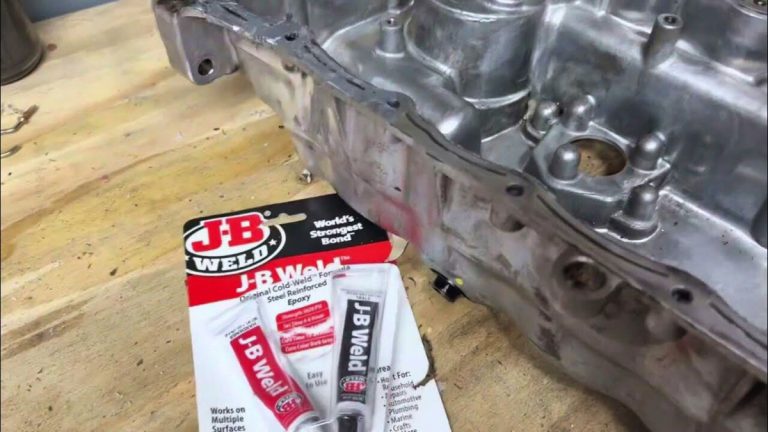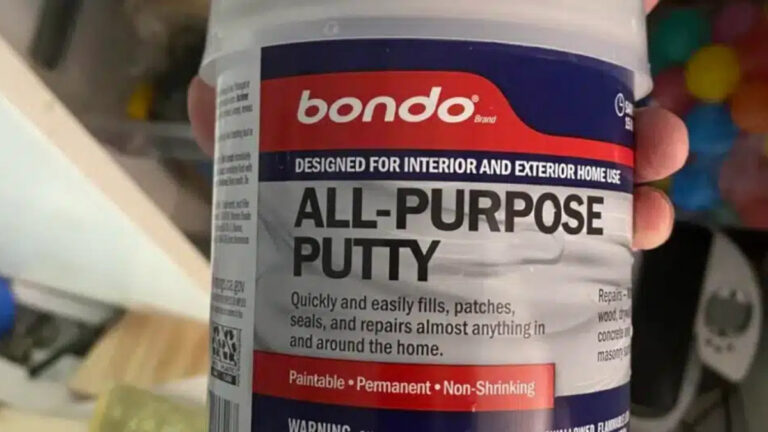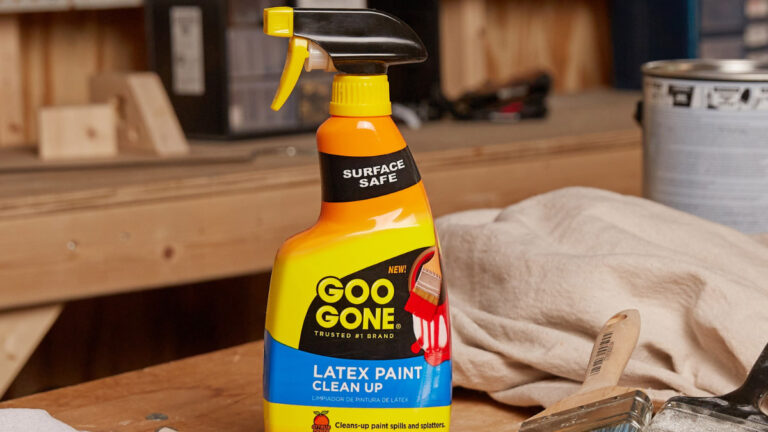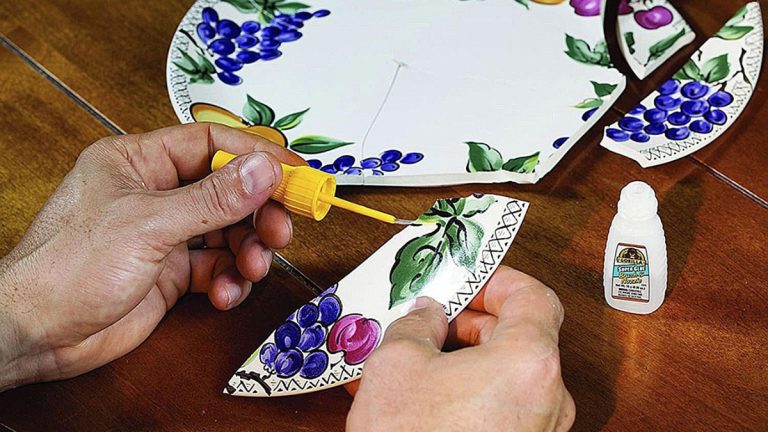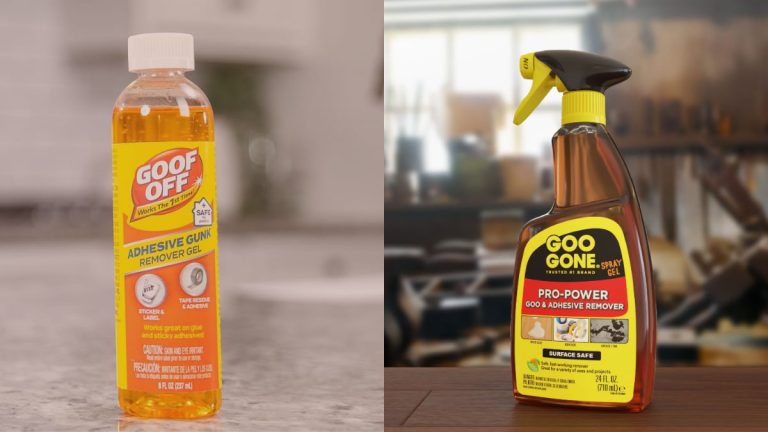JB Weld Plastic Bonder vs Plastic Weld: Which is Better for Repairs?
When tackling plastic repairs, you might find yourself torn between JB Weld Plastic Bonder and Plastic Weld. Both products promise strong, durable bonds, but which one truly delivers on its claims? Whether you’re fixing a broken car part or crafting a DIY project, choosing the right adhesive can make all the difference.
Key Takeaways
- Composition and Set Time Differences: JB Weld Plastic Bonder is a two-part epoxy with a 15-minute set time, whereas Plastic Weld products vary widely, including some with similar set times.
- Strength and Versatility: JB Weld offers high strength and versatility, suitable for various plastics and even drillable. Plastic Weld strength varies by product but often provides strong bonds, sometimes requiring specialized products for specific plastics.
- Application and Curing: Both products need clean surfaces, careful mixing, and pressing with a 15-minute general set time. JB Weld must be sanded in 30 minutes and fully cures in 24 hours. Plastic Weld’s curing process can extend up to 24 hours as well.
- Ventilation Needs: Both adhesives require good ventilation due to strong fume emissions, necessitating safety precautions during use.
- User Experiences: Users have noted JB Weld’s strong bond but mentioned inconsistency in mixing and longer cure times under cooler conditions. Plastic Weld generally receives praise for quicker and strong bonds but allows limited adjustment time post-application.
Comparing J-B Weld Plastic Bonder and Plastic Weld
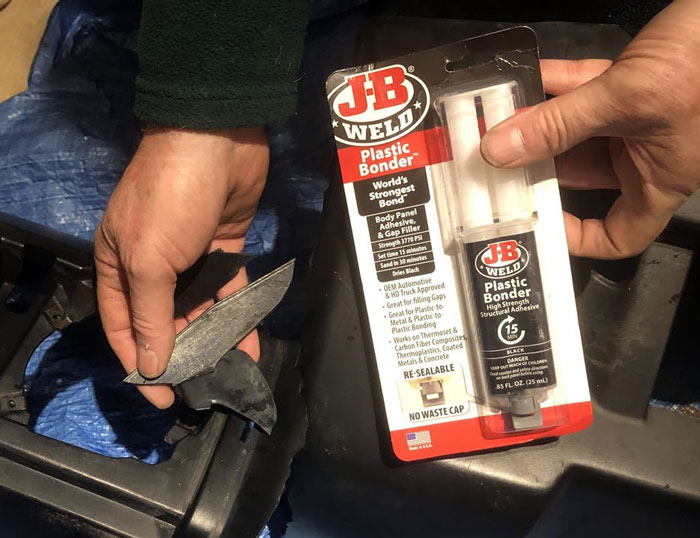
Product Features
J-B Weld Plastic Bonder
- Composition: A two-part epoxy adhesive, specifically designed for bonding plastics, offers a strong and durable bond.
- Set Time: Typically sets in 15 minutes, though actual set time can vary based on environmental factors like temperature and humidity.
- Strength: Known for its high strength, it’s ideal for various plastic repair tasks, ensuring a reliable fix.
- Versatility: Can bond different types of plastics, including the ability to form new plastic parts and allow for drilling.
- Curing Time: Can be sanded in 30 minutes, though full curing may take longer to achieve optimal strength.
- Ventilation: Requires good ventilation due to strong fumes, making it essential to work in a well-ventilated area or wear appropriate protective gear.
Plastic Weld
- Composition: Varies widely among products, including other epoxy adhesives or specialized plastic welding kits tailored for specific needs.
- Set Time: Similar to epoxy adhesives, set times can vary, generally aligning with the 15-minute benchmark of most effective adhesives.
- Strength: Generally, plastic welding products offer strong bonds, but the strength can vary depending on the specific product and plastic type.
- Versatility: Often used for specific or general applications, capable of bonding various plastic types but may require specialized products for particular plastics like polyethylene or polypropylene.
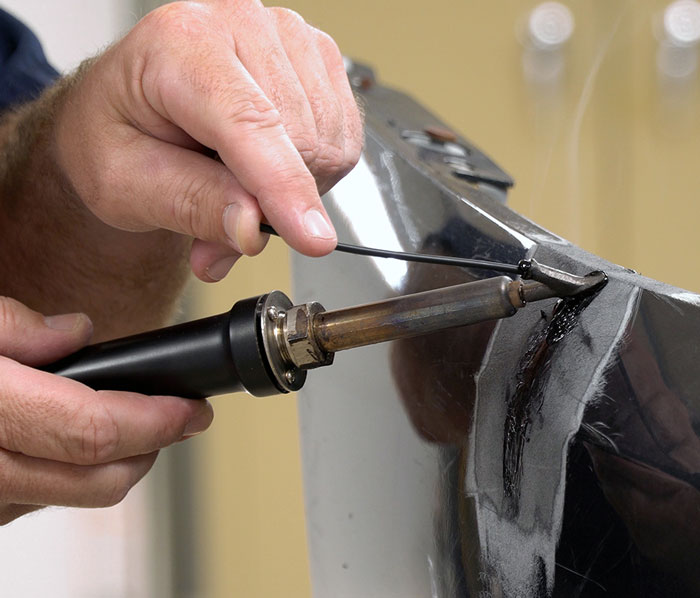
Application Process
J-B Weld Plastic Bonder
- Preparation: Clean the surfaces to be bonded using soap and water or a suitable cleaner to ensure they are free of oils, dirt, and debris.
- Mixing: On a disposable surface, mix the two parts of the epoxy as per the instructions, typically until the mixture is a consistent color.
- Application: Apply the mixture to both surfaces. Use enough to cover the bonding area but avoid excess which may seep out during pressing.
- Joining: Press the surfaces together firmly. Secure them in place if possible using clamps or weights.
- Setting: Allow the bond to set for at least 15 minutes. It can be sanded after 30 minutes but must cure fully for the best results, usually taking up to 24 hours.
- Ventilation: Ensure the workspace has adequate ventilation to mitigate the strong fumes emitted during curing.
- Preparation: Clean surfaces thoroughly. Use a degreasing agent if necessary for removing contaminants that may affect adhesion.
- Selection: Choose the appropriate plastic welding product for the specific plastic type you are working with.
- Application: Follow the product-specific instructions, which may vary. Some may require heating, mixing, or direct application.
- Joining: Align and press the surfaces together. Some products may require the use of clamps to hold the parts until the bond sets.
- Setting: Respect the set time indicated on the product’s instructions. Times can vary but usually align with epoxy adhesive set times (around 15 minutes).
- Ventilation: Work in a well-ventilated area or use proper protective equipment due to possible fume emissions during the application and setting process.
| Feature | J-B Weld Plastic Bonder | Plastic Weld |
|---|---|---|
| Composition | Two-part epoxy adhesive | Varies (epoxy adhesives or welding kits) |
| Set Time | ~15 minutes | Varies (~15 minutes) |
| Strength | High Strength | Varies (generally strong) |
| Versatility | Bonds various plastics, drillable | Varies, may require specialized products |
| Curing Time | Sandable in 30 min, fully cures longer | Varies, generally up to 24 hours |
| Ventilation | Requires good ventilation | Requires good ventilation |
Understanding the characteristics and application processes of J-B Weld Plastic Bonder and general Plastic Weld products provides you with clear guidance on which to choose for your specific plastic repair needs.
Strength and Durability
This section highlights the strength and durability of JB Weld Plastic Bonder and Plastic Weld, providing you with a detailed analysis based on testing conditions and results.
Testing Conditions
To assess the strength and durability of the adhesives, various tests were conducted under controlled conditions. These tests used common types of plastics, such as ABS and HDPE, to evaluate performance accurately.
- Surface Preparation: Cleaning the plastic surfaces thoroughly to ensure no contaminants affected the bond quality.
- Mixing and Application: Mixing the adhesives according to manufacturer instructions, then applying them on test samples.
- Curing Time: Allowing proper curing time as specified (15 minutes for JB Weld Plastic Bonder) to guarantee optimal bond strength.
- JB Weld Plastic Bonder:
- Strength: The bond strength varied by plastic type. It bonded effectively with ABS and polycarbonate. But, it struggled significantly with polyethylene (HDPE).
| Plastic Type | Without Mesh (Pounds) | With Mesh (Pounds) |
|---|---|---|
| HDPE | 1.1 | Not Tested |
| ABS | 13.8 | Over 30 |
| ABS with Mesh | Not Tested | 53.8 |
- Durability: The durability improved notably with wire mesh reinforcement. For example, the bond strength on ABS jumped from 13.8 pounds to over 30 pounds and reached 53.8 pounds with mesh.
- Plastic Weld:
- Strength: Plastic welds using specialized kits achieved stronger bonds than typical adhesives like JB Weld. The strength depends on both the plastic type and weld quality.
- Durability: The tests showed high durability for plastic welds, especially when executed with precision tools designed for specific plastic types.
By understanding these testing conditions and results, you can make an well-informed choice about the best adhesive for your plastic repair needs.
Versatility and Usability
Selecting the right adhesive for plastic repairs is crucial for achieving strong bonds and durable fixes. JB Weld Plastic Bonder and Plastic Weld offer unique advantages and limitations in their versatility and usability.
JB Weld Plastic Bonder
Application:
JB Weld Plastic Bonder is a two-part epoxy adhesive designed for plastics. The product comes in a syringe dispenser with components of different viscosities, which can be tricky to mix evenly. Properly mixing ensures a strong bond.
Setup Time:
Advertised to set in 15 minutes and be sandable in 30 minutes, user reports indicate it can take several hours to fully set. Plan your projects accordingly to account for varying setup times.
Ventilation:
This product emits strong fumes, requiring good ventilation during use. Ensure you’re working in a well-ventilated area to avoid inhaling harmful vapors.
Plastic Weld
Application:
Plastic Weld varies in composition and can include other epoxy adhesives or specialized welding kits. It offers strong bonds, but its effectiveness depends on the specific product and type of plastic being repaired.
Setup Time:
Like JB Weld Plastic Bonder, Plastic Weld advertises a quick set time of around 15 minutes. Verify the setting time for your specific product, as this influences the workflow and planning of your repair projects.
Ventilation:
Similar to JB Weld Plastic Bonder, Plastic Weld emits fumes, requiring proper ventilation. Always ensure good airflow in your workspace to mitigate health risks.
Suitable Materials
JB Weld Plastic Bonder
- Plastics: Effective for varying plastic types, including those in automotive interiors and household items.
- Other Materials: Can bond other substrates but primarily focused on plastics.
Plastic Weld
- Different Plastics: Suitable for various plastics, dependent on the specific product used.
- Specialized Kits: Some kits may cater to specific plastics like ABS or polycarbonate, enhancing bond strength.
Use Cases
JB Weld Plastic Bonder:
- Automotive Repairs: Ideal for fixing interior car components or small plastic parts.
- DIY Projects: Suitable for household repairs, including broken toys and plastic tools.
- Electronic Enclosures: Can be used for sealing or repairing plastic electronics casings.
Plastic Weld:
- Model Making: Useful in hobbyist projects, such as assembling plastic models.
- Plastic Furniture Repair: Effective for mending cracked or broken plastic chairs and tables.
- Aquarium Fixes: Some specialized products can be used for repairing plastic components in aquariums.
| Feature | JB Weld Plastic Bonder | Plastic Weld |
|---|---|---|
| Composition | Two-part epoxy adhesive | Varies: Epoxy adhesives, specialized kits |
| Setup Time | Advertised 15 mins, often longer | Around 15 mins |
| Ventilation | Strong fumes, needs good ventilation | Emits fumes, requires proper ventilation |
| Primary Materials | Various plastics, some other materials | Specific plastics, varies by product |
| Use Cases | Auto repairs, DIY, electronics | Hobby projects, furniture, aquariums |
Understanding these adhesives’ versatility and usability ensures you choose the correct product for your plastic repair needs.
User Experience and Feedback
User experience differs notably when using JB Weld Plastic Bonder versus Plastic Weld. Both products offer distinct advantages and drawbacks that affect their practical application and overall satisfaction.
User Reviews
JB Weld Plastic Bonder
- Effectiveness:
- Some users found it effective for tasks like forming new plastic dash brackets. They highlighted its strong bonding capability that allows drilling without compromising the integrity.
- Others reported it didn’t harden quickly. Specifically, it took hours to fully cure in cooler environments, contradicting the advertised quick set time.
- Ease of Use:
- Users faced issues with the dispensing system. One liquid is thinner than the other, causing challenges in achieving a consistent mix.
Plastic Weld (e.g., Devcon Methacrylate)
- Effectiveness:
- Users praised Devcon Methacrylate for setting in about 5 minutes. It is noted for its strong bond quality and described as aggressive, instilling confidence in the repair’s durability.
Common Issues
JB Weld Plastic Bonder
- Dispensing System:
- The inconsistency in liquid viscosity leads to uneven mixing, affecting the bond’s strength and reliability.
- Cure Time:
- Users in cooler climates found the curing period longer than advertised. This delay impacts project timelines and overall user satisfaction.
- Aggressive Nature:
- The aggressive setting nature may pose challenges in adjustments post-application. You may not have much time to reposition the parts after application.
- Ventilation Requirement:
- Strong fumes necessitate good ventilation. Lack of proper ventilation can result in discomfort and potential health risks during usage.
| Product | Quick Set Time | Cure Time (User Reports) | Bond Strength | Common Issues |
|---|---|---|---|---|
| JB Weld Plastic Bonder | 15 minutes | Often hours in cooler environments | Strong for forming, drilling, etc. | Inconsistent dispensing, long cure time |
| Plastic Weld (Devcon Methacrylate) | 5 minutes | Noted to set quickly | Aggressively strong, confident bonds | Limited adjustment time, ventilation needs |
These insights into user experiences and common issues make the choice between JB Weld Plastic Bonder and Plastic Weld clearer.
Conclusion
Choosing between JB Weld Plastic Bonder and Plastic Weld hinges on your specific needs and project requirements. While JB Weld Plastic Bonder offers a robust two-part epoxy solution that’s versatile for various plastics, it may struggle with certain types like HDPE. Plastic Weld, with its varied compositions, can provide stronger bonds for specific plastics but demands careful selection and application.
Both products require good ventilation due to strong fumes and have similar set times. User feedback highlights the strengths and limitations of each, helping you make an well-informed choice. Whether you’re tackling automotive repairs, DIY projects, or model making, understanding these adhesives’ characteristics will ensure you achieve the best results for your plastic repairs.
Frequently Asked Questions
What is JB Weld Plastic Bonder?
JB Weld Plastic Bonder is a two-part epoxy adhesive designed specifically for bonding various types of plastics. It features a quick set time of around 15 minutes and provides a strong and durable bond.
What types of plastics can JB Weld Plastic Bonder bond?
JB Weld Plastic Bonder is versatile and can bond a variety of plastics, including ABS and polycarbonate. However, it may not perform as well on polyethylene (HDPE) without reinforcement.
How strong is the bond created by JB Weld Plastic Bonder?
JB Weld Plastic Bonder creates a very strong bond, especially when used on suitable plastics. The bond strength can be enhanced further with reinforcement, such as using wire mesh.
What is the cure time for JB Weld Plastic Bonder?
While JB Weld Plastic Bonder sets in approximately 15 minutes, it can take longer to fully cure, with some users reporting full cure times extending beyond the advertised 24 hours in cooler environments.
Does JB Weld Plastic Bonder require ventilation during use?
Yes, proper ventilation is essential when using JB Weld Plastic Bonder due to its strong fumes. Always apply in a well-ventilated area to ensure safety.
How does Plastic Weld differ from JB Weld Plastic Bonder?
Plastic Weld comes in various compositions, including different epoxy adhesives and welding kits. Its effectiveness and composition can vary based on the specific product and type of plastic being bonded.
What types of plastics can Plastic Weld bond effectively?
Plastic Weld can be used on a variety of plastics, but its effectiveness depends on the specific product. It generally offers strong bonds similar to JB Weld Plastic Bonder when used correctly.
What is the set time for Plastic Weld?
The set time for Plastic Weld is similar to JB Weld Plastic Bonder, generally around 5 to 15 minutes. However, it may vary slightly depending on the specific product.
What applications are suitable for JB Weld Plastic Bonder?
JB Weld Plastic Bonder is suitable for automotive repairs, DIY projects, and electronic enclosures due to its strong, durable bonding capabilities.
What are common applications for Plastic Weld?
Plastic Weld is ideal for model making, furniture repairs, and aquarium fixes. Its versatility makes it suitable for a wide range of plastic repair tasks.
Are there any user-reported issues with JB Weld Plastic Bonder or Plastic Weld?
Users have reported issues with JB Weld Plastic Bonder’s dispensing system and longer cure times in cooler environments. For Plastic Weld, users appreciate the quick setting time but note limited adjustment time and the need for good ventilation.

